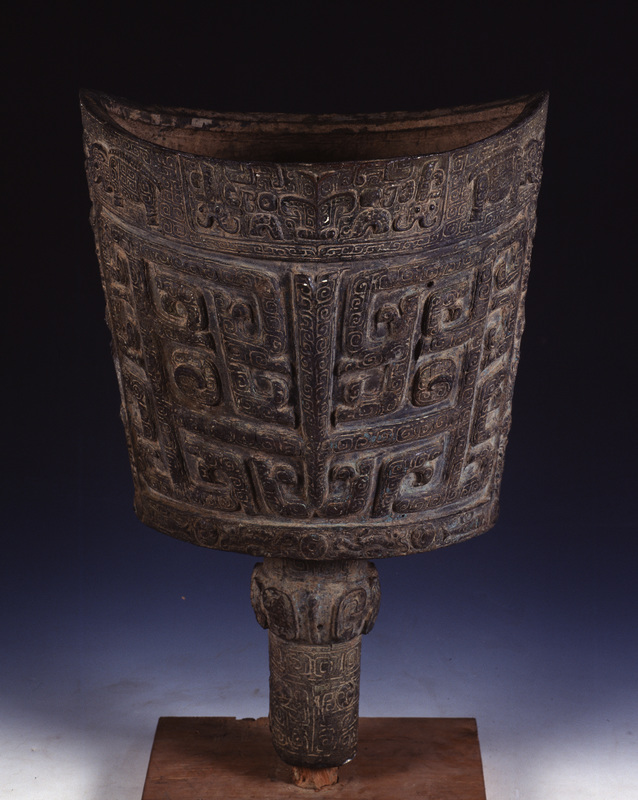Bronze Nao with Elephant Patterns of Shang Dynasty

Bronze Nao with Elephant Patterns
Shang Dynasty (1600—1046BC)
Musical instrument
Height: 70cm; Width at Mouth: 46.2cm; Weight: 67.25kg
Excavated from Ningxiang County, Hunan Province in 1959
Nao refers to a kind of bell-shaped percussion instrument. Altogether nineteen big bronzes of Nao were excavated from the same site; each can produce one or two distinctive pitches when struck on different parts. When grouped together, they could be used to perform various ancient musical compositions. Up to now, they are regarded as the earliest musical instruments that can be performed in a group. Therefore, archeologists infer that this bronze Nao may be one of a chime of bells.
At the top of the design, two small elephants with curled noses stand on the two sides of the bronze Nao. The left, middle and right sides are decorated with six tigers, six fishes and eleven nails. The design of the elephants is abstract and mysterious, but looks very vivid and realistic. With complicated and breathtaking design, this is a masterpiece of bronzes of Shang Dynasty.
深入探索
Bells were used in ancient Chinese rituals to communicate with ancestral spirits, to sound the retreat in battles and also for entertainment as ensemble instruments in concert with other instruments, singers and dancers.
Ancient Chinese bells are not circular but have rather an almond-shaped cross-section. This is important because it means the sound dies away quickly and does not interfere with any following music. It gives a well-focused pitch and is rather more musical than the sound of a circular bell.
Chinese bells have no clappers, so they make their sounds by being struck with wooden sticks. Their shape gives them two distinct pitches, depending on whereabouts on them they are struck.
Even today, most Buddhist and Daoist temples are furnished with bells which are beaten as part of the religious ceremonies. (BBC)



